- Administrator
- Albums and Singles
 Pan•American's first record in four years comes timidly, marked by magnificently produced songs on eggshells and generally downplaying every one of its own notes. Now a performing band with the addition of Steven Hess and former Labradford bandmate Bobby Donne, the project of Mark Nelson adds a few elements of traditional rock music to his palate but only in the scarcest concentrations possible. What was once scattered becomes rhythmic, melodic, and occasionally more sporadic but still as sparse.
Pan•American's first record in four years comes timidly, marked by magnificently produced songs on eggshells and generally downplaying every one of its own notes. Now a performing band with the addition of Steven Hess and former Labradford bandmate Bobby Donne, the project of Mark Nelson adds a few elements of traditional rock music to his palate but only in the scarcest concentrations possible. What was once scattered becomes rhythmic, melodic, and occasionally more sporadic but still as sparse.
Touting this as a "live band" record as Kranky has done gives me a different sense of interpreting each song on the album. The opener, "The Cloud Room," is as much crystalline production as it is musicianship, where each note sounds like a long night's labor in the making. Nelson's bowed guitar wafts along in dim decaying tones and Bobby Donne's bass hums patiently, while Steven Hess' excellent drumming, especially in his persistent use of riveted cymbals, glimmers with glassy beauty. "Fifth Avenue 1960" stirs the placid waters with an irritating high pitched sine amidst deep thunderous rumbling, and "Relays" uses a 4/4 kick pattern like a heartbeat, crossing effortlessly back and forth between ambient music and some distant cousin of dub techno's watery pulse.
The new dynamic makes for an easy entry into different song styles. With even the slightest addition from Donne's bass, Pan American turns "Project For An Apartment Building" into mock techno where it was at first a meandering clatter of hi hats and distant drones. Hess' contributions feel the most substantial, improving a multitude of songs heavy in middle frequencies by adding crisp, distinctive drum patterns. Only on the final track, "Virginia Waveform," does it feel like they are cutting loose, and even then it's a patient, cyclical, scholarly looseness, exactly as free and jammy as Mark Nelson had dictated they were allowed to be. For the most part, though, the band's chops lie in their jazzy simplicity, adding only the most necessary notes to complete the picture. So I don't fault Nelson for this more subtractive approach to performing.
In fact, the band often reaches such an immediate consummate atmosphere, just lingering on its perfect notes, that it seems an afterthought to fill it with direction. If I had to hold one major complaint against the album, it would be that once the band's pastoral ambiance is established, Pan•American often has no idea what to do from there besides listlessly wandering, appreciating their own schemes and textures like they were staring at monuments. Still, it's a gorgeous piece of audio tourism, so I'm content to just listen and drift along to it too.
samples:
Read More
- Administrator
- Albums and Singles
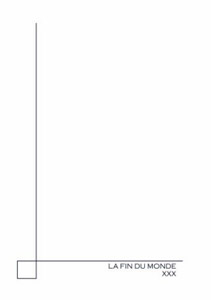 Consisting of the pair of artists that curate the Menstrual Recordings label, who have been heavy on the MB reissues, it is not at all surprising that Dedali and Disruptor’s grey, depressive electronics owe a notable debt to Bianchi’s legacy. However, their music stands entirely on its own, both in its emphasis on audio visual presentation and their approach to sound design. The lineage of this lavish CD/DVD set is clear, but the two manage to carve out their own niche as well.
Consisting of the pair of artists that curate the Menstrual Recordings label, who have been heavy on the MB reissues, it is not at all surprising that Dedali and Disruptor’s grey, depressive electronics owe a notable debt to Bianchi’s legacy. However, their music stands entirely on its own, both in its emphasis on audio visual presentation and their approach to sound design. The lineage of this lavish CD/DVD set is clear, but the two manage to carve out their own niche as well.
The music contained on the CD portion of this package is a different mix than what scores the accompanying short films, so while the two share some similar moments, each disc is it is own distinct entity.The stand alone audio disc, Neurological Possession, is a great example of a modernized take on that bleak electronic sound pioneered by the likes of Bianchi, and also Murder Corporation and Atrax Morgue, but having a more inviting, almost classically musical timbre to it.The first of the three-part title suite is all reverberated drifts and cavernous noises, with a few snippets of mantra like voices appearing throughout, emphasizing the theme of religious fervor that is the predominant theme of the work.
The second and third parts are quite different from one another, with the former consisting mostly of shifting and almost melodic passages of sound, with a DX7 synthetic bell tolling in the mist.As a whole, it is the most spacious and inviting performance here, if still somewhat sad and morose.The third part is much more of a grimy analog synth throb that channels Bianchi more directly, as it does some of Atrax Morgue’s less aggressive material.This especially makes sense, given it was constructed using the late Pierpaolo Zoppo’s (Mauthausen Orchestra) equipment.
The long closer "Internal Bleeding" takes up almost half of the disc, and uses that extended time to stretch out and float into many different directions.Made up partially of demos, sketches, and pieces of material that were recorded for a collaboration with Maurizio Bianchi, it encapsulates the sound of the album perfectly, balancing reverb heavy tones and percussive bits with some of its harsher moments.
The video accompaniment is notably more traditional in its approach, relying on lots of grainy black and white footage of nudity, graveyards, and religious iconography that are reminiscent of avant garde cinema filtered through a more cliché giallo toolkit. Other videos are expanded to images of social unrest, pornography, and medical footage, which is an obvious antecedent of works by SPK and Cabaret Voltaire some 30 years prior.It is nothing new or groundbreaking on its own, but it does fit the early 1980s industrial sensibility of the project very well, albeit not feeling quite as evolved as the music does.
Both a fitting tribute and a splendid, modernized update to the Italian industrial scene from the past, this audio visual collaboration is as much of a tribute as it is a new phase in a familiar sound.Admittedly, the audio portion is a bit more singular than the video is, but both have a distinct familiarity and nostalgia about them that makes even the occasional cliché endearing and enjoyable.Like a film that can recapture the essence of an era without always pushing it into new territories, it is engaging and tinged with just enough nostalgia to feel right.
samples:
 
Read More
- Administrator
- Albums and Singles
 The first collaboration between Kazuyuki Kishino and Cristiano Lucani is a mass of mangled samples, processed field recordings, electronics, and piano that at times resembles an understated take on harsh noise, and at other times a sloppy, yet engaging mess of sounds. While an intense devotion to structure and composition might not be here, there are more than enough pleasurable noises and small, but fascinating outbursts to more than make up for that
The first collaboration between Kazuyuki Kishino and Cristiano Lucani is a mass of mangled samples, processed field recordings, electronics, and piano that at times resembles an understated take on harsh noise, and at other times a sloppy, yet engaging mess of sounds. While an intense devotion to structure and composition might not be here, there are more than enough pleasurable noises and small, but fascinating outbursts to more than make up for that
Across these five untitled pieces, the dynamic jumps and skips around hyperactively, never settling into one style or approach for too long.For instance, the first piece leads off with chirping noises and squelchy, spastic electronics propelled by an unconventional, yet distinctly rhythmic undercurrent that guides it along.It feels like the legion of noises someone like Merzbow might create, but with less abrasive components.The second half thins things out to clicks, piano improvisations, and odd alien atmospheres to close the piece in a much different way than it began.
The second segment immediately eschews subtlety and instead goes right into a dense insect swarm of harsh noise that eventually disintegrates into undulating electronics and a ring modulated rattling that is at times painful.This is all before settling into a glitch-ridden passage of disturbing ambience that conjures dark, obscured images of creatures lurking in the darkness.The third comes across even more of a collage feel with rhythmic throbs and a later emphasis on water and field recordings, complete with frogs and aquatic life that seemingly bounds from one setting to another.
The fifth piece especially has the most hyperactive qualities to it.Cut up and scattershot samples are thrown recklessly atop a bed of slowly pulsing electronics that makes for the only constant throughout the otherwise chaotic composition.The fourth segment demonstrates a bit more of a order to the entropy, however.Even amidst the stop/start stabbing electronics, a sense of organization can be heard, first directing everything towards an old school wall of harsh noise, but then stripping it away, leaving only the most sparse and delicate bits of the album to be heard.
Album does not necessarily feel like the most appropriate descriptor for Proto Planet.There does not seem to be any clear overarching sense of structure or composition notable throughout.Instead it comes across more as a series of sonic miniatures:captivating collages of processed field recordings and mutilated electronics that take multiple listens to pull apart.It is a case where cohesion is unnecessary, and instead it works best as a compilation of sounds that jerkily jump from one passage to the next, making it easy to dive in at any point and enjoy what is there.
samples:
 
Read More
- Administrator
- Albums and Singles
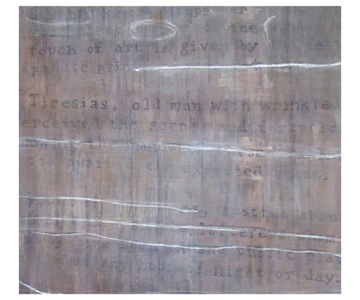 Originally issued on the Flingco Sound System label in 2010, this Virginian trio's full-length album is on CD for the first time, complete with two previously unreleased bonus songs. Homegoing is a powerful, yet light suite of electronic pieces that proves that intensity does not have to be oppressive or forceful.
Originally issued on the Flingco Sound System label in 2010, this Virginian trio's full-length album is on CD for the first time, complete with two previously unreleased bonus songs. Homegoing is a powerful, yet light suite of electronic pieces that proves that intensity does not have to be oppressive or forceful.
Most of the songs consist of indistinct electronics that do not resemble any specific sort of instrumentation, but insteadblend together perfectly."Streaming Wisdom" is a light, drifting work of reverberated tones that float around like a cloud in the clearest blue sky. It is only on "Yoke" that the moderately processed tones of a cello can be heard, fragmented and cascading outwards.
The title song initially begins the same, with light-infused tones and textures that glisten about until a slow transition to a dourer, somber feel that is no less beautiful."Mirror" balances the dark and light as well, but throughout the song, mixing an almost overdriven, bassy undercurrent that lurks beneath the more buoyant layers.
This contrast is perhaps the most stark and dramatic on the nearly 11 minute "Dead Bird," which leads off with a single reverberating and echoing tone.Slowly that tone is stretched, paired with what sounds like a voice fragment and additional electronic elements.It builds to a rich, colorful pastiche of sounds and an almost rhythmic wind chime throb that slowly transitions to darker, bleaker realm in its conclusion.
The two additional pieces that are added to this digital issue are rather different in comparison, demonstrating a rougher, more dissonant version of the band."12:12" brings up harsh noise like squeals of sound, reverberated and put aside cheap synth pulses to create a weird hybrid of droning electronics and ugly electronic noise.A Pan•American remix of "Prieure" concludes the album, again taking a harsher route.Static heavy sputters shoot out over a power-line like hum, with feedback and static fading into focus here and there.It is not as dissonant as "12:12," but it definitely is more spiny and nasty than the main album.
There is a clear sense of power and strength throughout Homegoing, but it is muted, laconic to some extent.It is this self-imposed restraint that makes those moments where it shifts or changes shine through greatly, such as the harsher elements on the bonus tracks, or the move toward more somber territories on the title piece.Beautiful is a term that is dropped far too often when discussing music, but it is entirely appropriate here, with its soaring electronics and clear, forceful moments of tonal drift.
samples:
 
Read More
- Administrator
- Albums and Singles
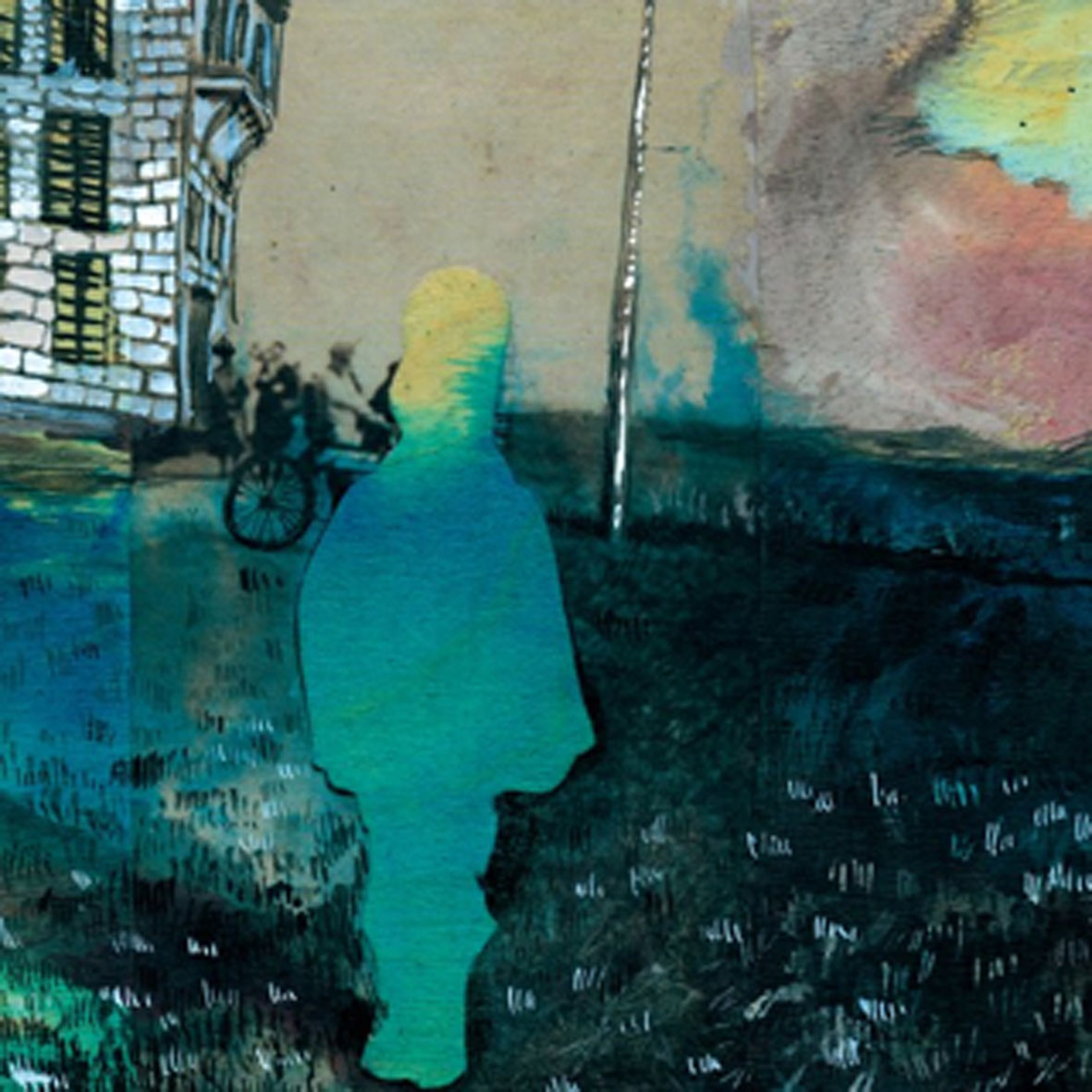 Colleen Kinsella and Caleb Mulkerin have been responsible for some of my favorite music for years, but Big Blood is a significantly weirder, more unpredictable, and prickly entity than the duo's previous outlet, Fire on Fire.  While they are almost always compelling and distinctive, Big Blood's voluminous output, occasional shrillness, general inscrutability, and stylistic variability can make them a hard band to fully embrace.  Fortunately, this gorgeous double LP captures captures Colleen and Caleb at their absolute best, occupying the bizarre, lonely nexus where Appalachian folk, ritual, sound art, vintage Egyptian pop, and deep psychedelia intersect.
Colleen Kinsella and Caleb Mulkerin have been responsible for some of my favorite music for years, but Big Blood is a significantly weirder, more unpredictable, and prickly entity than the duo's previous outlet, Fire on Fire.  While they are almost always compelling and distinctive, Big Blood's voluminous output, occasional shrillness, general inscrutability, and stylistic variability can make them a hard band to fully embrace.  Fortunately, this gorgeous double LP captures captures Colleen and Caleb at their absolute best, occupying the bizarre, lonely nexus where Appalachian folk, ritual, sound art, vintage Egyptian pop, and deep psychedelia intersect.
This seems to be loose concept album of sorts, as the title and many of the songs make allusions to Yevgeny Zamyatin's dystopian classic We, a novel that I have embarrassingly not yet read.  Fortunately, my egregious literary ignorance does not inhibit my enjoyment of this effort at all, aside from perhaps making an already cryptic, arcane album slightly more so.  Possible deeper meaning aside, Radio Valkyrie certainly sounds a lot like an otherworldly, late-night radio transmission, which is both thematically appropriate and eerily evocative.  In some cases, that resemblance is quite overt, as swooping shortwave radio-like feedback appears in several songs (most prominently in "Into the Wild, Part I") and there are a few ominous, tinny interludes on the first record that sound like a distant, distorted signal pregnant with menace.  In other cases, the effect is achieved more subtly, as these songs all share a deeply hallucinatory, nocturnal feel.
Stylistically, however, Radio Valkyrie is all over the map, as the sole constant thread seems to be Colleen Kinsella's ragged, unusual vocals (usually heard though a thin haze of static or distortion).  As much as I enjoy Caleb's own unique vocals (sort of a strangled hillbilly yelp), it is fitting that only Colleen sings here, as her Siren-esque, force-of-nature vocals are ideally suited for such a hazily unearthly suite of songs.  Or, more accurately, "songs."  Despite being a double album, there are very few conventionally structured songs here, particularly on the second album: Radio Valkyrie leans very heavily on abstract collages and droning soundscapes.  Fortunately, the few songs that do appear are almost invariably excellent and the surrounding instrumental interludes are so effectively moody and surreal that they could easily carry an album on their own.
The best pieces, of course, are the ones that sound like absolutely no one else.  The most striking of those is probably "Sanati," which seems to be a Layla Murad (or Leila Mourad) cover of sorts, though translations vary and I cannot read Arabic well enough to confirm that (or at all, actually).  Regardless, I am sure it sounds nothing like the original, as this version is built upon little more than hollow, funeral procession percussion, a haze of uneasy feedback, and Kinsella's possessed-sounding wails and chants.  "Sirens Knell, Part II," for its part, is even more brilliantly warped, sounding like an unholy collision of torch song; eerily dissonant Natural Snow Buildings-style flutes; backwards, wrong-sounding guitars; and a malfunctioning gramophone.
Of course, Radio Valkyrie is not without its flaws, but this is probably as close to a perfect album as anyone could expect from Big Blood and the "flaws" in question are mostly relative.  For example, the opening "40 Days and 40 Nights" would probably be a highlight on any other album, but sounds too conventionally "Big Blood" to fit on such an otherwise ambitiously mind-bending effort as this one.  I had a similar issue with the somewhat shrill sludge rock of "Everything is Improving."  It is not necessarily weak, but this is just not the ideal place for a stomping "rock" song with snarling wah-wah guitar.  Conversely, however, there is absolutely no filler to be found anywhere and the two records are otherwise thoroughly unique, wonderful, coherent, immersive, complex, haunted-sounding, and totally brain-melting, which renders any minor wobbles fairly irrelevant.  This is the album I have been waiting for from Caleb and Colleen: Radio Valkyrie is Big Blood's masterpiece.
Samples:
 
Read More
- Administrator
- Albums and Singles
 Lovesliescrushing's 1992 debut bloweyelashwish inarguably stands as one of the greatest shoegaze albums of all-time, but its dreamy, warped guitars had the unfortunate effect of dooming the hapless Scott Cortez to a lifetime of Kevin Shields comparisons, a situation that is probably not helped at all by the Shields-ian infrequency of LLC's major releases.  Case in point: Ghost Colored Halo is the first album that Cortez and bandmate Melissa Arpin-Duimstra have actively recorded together in over a decade.  That reunion seems to have been a fruitful one creatively, but not without some caveats.  I would not necessarily call this effort a return to form (its a bit more understated and drone-minded than Cortez's best work), but its better moments are are just as sublimely beautiful as ever.
Lovesliescrushing's 1992 debut bloweyelashwish inarguably stands as one of the greatest shoegaze albums of all-time, but its dreamy, warped guitars had the unfortunate effect of dooming the hapless Scott Cortez to a lifetime of Kevin Shields comparisons, a situation that is probably not helped at all by the Shields-ian infrequency of LLC's major releases.  Case in point: Ghost Colored Halo is the first album that Cortez and bandmate Melissa Arpin-Duimstra have actively recorded together in over a decade.  That reunion seems to have been a fruitful one creatively, but not without some caveats.  I would not necessarily call this effort a return to form (its a bit more understated and drone-minded than Cortez's best work), but its better moments are are just as sublimely beautiful as ever.
It is very difficult for an outsider to fully grasp lovesliescrushing's creative trajectory, as their discography is filled with diversions, experiments, remixes, side projects, and unearthed/reworked early recordings.  However, in many ways, it seems quite reasonable to view Ghost Colored Halo as the long-awaited follow-up to 1996's Xuvetyn, as Scott and Melissa are back to recording woozy, dreamlike soundscapes together on analog tape rather than exploring the potential of the unaccompanied human voice or digitally assembling albums from their seemingly vast backlog of unused recordings.  In fact, the duo have even surpassed the aesthetic purity of their early days by recording this album "live" at Melissa's house with no overdubs.
Musically, these pieces do not sound at all like they were recorded in single takes, as Cortez is something of a loop wizard.  On the more drone-like pieces, like "Blemished Sunspot" and "The Wounds That Won't Heal," Scott piles on layer after layer until he achieves a churning sea of guitar noise, but the more compelling and distinctive moments tend to be the more fragile, delicate ones.  For example, the album's clear highlight is "The Tiger Hunts Alone," which is built upon little more than a bittersweet, languorously repeating arpeggio and Melissa's ghostly, heavily reverbed cooing.  That apparent simplicity is deceptive, however, as Cortez beautifully manipulates the coloration and dynamic of the central motif with subtle rumbles, swells, shimmers, and after-images.  The epic closer, "Blacklight Thundering Halo," is quite stunning as well, evoking fleeting flickers of light emerging from masses of giant, slow-moving dark clouds.
Unfortunately, there is a definite downside to recording in such a back-to-basics way: the sound quality tends to suffer. I am generally not passionate about sound quality at all, but the murkiness of this particular effort is a bit of a problem for me, as it makes this a significantly less dynamic and distinctive album than it should be.  A somewhat muddy recording of Scott Cortez painstakingly creating drone music with complexly interweaving layers of guitars sounds an awful lot like drone music by any number of other artists, which is very frustrating.
Of course, some aspects of the album actually benefit from the corroded sound quality (Arpin-Duimstra's vocals, the cleaner, more fragile guitar motifs, etc.), but the overall effect is not ideal.  I understand that the process was creatively invigorating and I am certainly glad to have Scott and Melissa working together again, yet I cannot help but feel that this could have been a much better album without the self-imposed limitations.  While Cortez has definitely proven that he is an absolute master at wielding loops and effects pedals in real-time, that feat does not matter all that much on the listening end.  That said, this effort still boasts some great songs (and no bad ones), so long-time fans will find a lot to enjoy.  My disappointment is probably rooted much more in my very high expectations than in Ghost Colored Halo's shortcomings–I wanted Cortez to reclaim his throne as a dream-pop visionary, but I only got an enjoyable drone album with a few flashes of brilliance.  I suppose things could be a lot worse.
 
Read More
- Administrator
- Albums and Singles
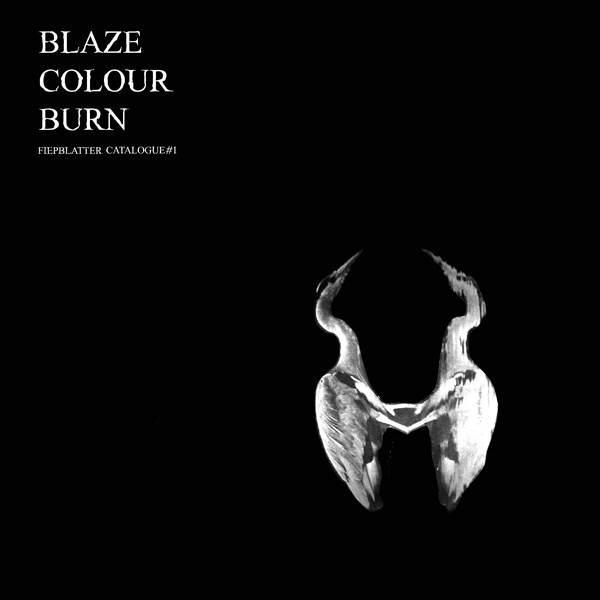 Jan St. Werner's work under his own name—assertively distinct from his music as Lithops and in Mouse On Mars—is an airy return to ideas he toyed around with over a decade ago, now given a conceptual touch up. His deference to specific aliases for these different releases has a purpose; most of the material here is for film scores or concept pieces and stands out from all his past work. It's scarce, warm, and comforting ambient music with little to dislike and plenty to think about.
Jan St. Werner's work under his own name—assertively distinct from his music as Lithops and in Mouse On Mars—is an airy return to ideas he toyed around with over a decade ago, now given a conceptual touch up. His deference to specific aliases for these different releases has a purpose; most of the material here is for film scores or concept pieces and stands out from all his past work. It's scarce, warm, and comforting ambient music with little to dislike and plenty to think about.
This album is the inaugural release from Thrill Jockey's "Fiepblatter" series of experimental musics, which use concept and location as a loose thematic umbrella. Blaze Color Burn is a perfect introduction, then, because the most substantial part of each piece is its conception and the meta-dialogue it attempts to create. Opener "Cloud Diachroma," designed as a companion to a film by visual artist Rosa Barba is a skirting, loose ambient composition that recalls Werner's work with Markus Popp as Microstoria. Most singularly apparent of Werner's ambient work is his inner logic with regards to rhythm, space, and time, and "Cloud Diachroma" sees him abstracting ideas of spatial awareness for a result that is disarming and beautiful.
Similarly with "Spiazzacorale B," culled from an eight hour live session that utilized its location as a primary instrument, the digital manipulation of sound holds major sway over the actual music. Melodies are stretched, a saxophone enters late, a conversation is overheard, drones swarm the channels, but the real notes being played are the silent clicks and shifts that Werner conducts from his laptop, engineering an odd conversation of competing harmonies and weird conflicts. I feel as if more than anything, I'm hearing the brushstrokes; "Serra Beacon's" odd interrupts and volume fluctuations strike me more than the notes playing and improves them in retrospect.
"Spiazzacorale A" tests the boundaries between live and prepared music by juxtaposing them abruptly and it comes out sounding like a polite argument captured in song. "Sipian Organ" is probably the harshest piece of the bunch, taking a divergent turn into staggered samples halfway through which frames the quieter, low frequency parts almost sarcastically. This is Werner taking voiceless, impersonal music and inserting a human quality to it, where the incidents of disharmony and arrhythmic jerks play out like the behavior of actors, with an unorthodox but intuitive sense of timing.
It has taken a long time for Jan St. Werner to have such a commanding hold on the music he wants to make. Blaze Color Burn is a collection of recordings that show his refined artistic vision in full swing, a pleasant environment of tone and timbre specialized by his unique brand of sonic personalization. Fans of Werner's poppier, beat driven electronica will find this a starker creation by far but I argue it is equal in complexity and in quality.
samples:
 
Read More
- Administrator
- Albums and Singles
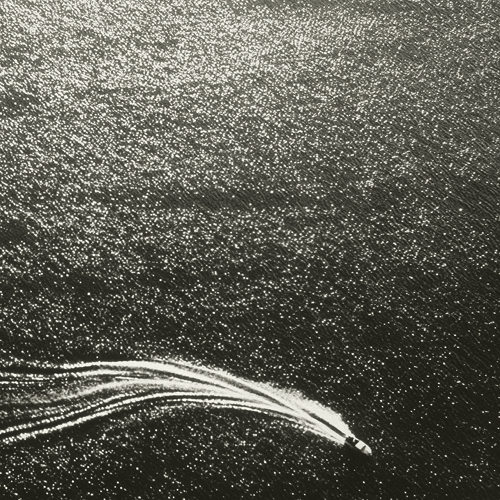 Miles Whittaker can’t be stopped. As one-half of Demdike Stare, as Suum Cuique, and now as Miles, he has released a string of records that have vanished almost as soon as they have appeared. Unsecured follows his first full-length under the Miles moniker, rounding out its low-key tones and subdued colors with four coarse and heavy techno productions. Like his other records, it’s also likely to disappear soon—and for good reason.
Miles Whittaker can’t be stopped. As one-half of Demdike Stare, as Suum Cuique, and now as Miles, he has released a string of records that have vanished almost as soon as they have appeared. Unsecured follows his first full-length under the Miles moniker, rounding out its low-key tones and subdued colors with four coarse and heavy techno productions. Like his other records, it’s also likely to disappear soon—and for good reason.
Faint Hearted, Whittaker’s first full-length for Modern Love as Miles, was sold out and unavailable almost before it was released. On it, atmosphere and dusty effects take precedence over melody; and stiff, sputtering rhythms—that remind me of Plastikman’s "Spastik" —constitute the music’s driving force. There aren’t many hooks and there isn’t much to dance to, but the album’s quiet magic won me over with repeat plays. It was the first techno record to win me over this year.
Unsecured is the second, and it blows Faint Hearted out of the water. It leaps out of the gate with "Blatant Statement," an explosive production propelled by sizzling percussion and a slippery 303 pattern catchier than anything on the full length. Miles beefs it up with the kind of cold synthesizer chords I’m absolute sucker for and keeps the tension running high for the next six minutes. The song doesn’t stop so much as it falls over. The melody sputters and trips, and falls head over heels.
The momentum carries into "Technocracy" —a cooler, but still forward moving dub track with an off-kilter rhythm and a hip-commanding low end— and on to the second side, where "Infinite Jest" erupts with a massive four-on-the-floor rhythm and a synth lead almost dirty enough for Pan Sonic. There is nothing subtle about it. It just pounds away for seven and a half minutes in full-on caveman glory.
"Plutocracy" winds the EP down with a darker atmosphere and some more of those cold synthesizer chords. This time they actually cool things off, as the record ends to the sound of their ominous moaning. But I’d honestly rather hear more like the first three songs. Faint Hearted is a good record for chilling out. Unsecured is great because it rocks so damn hard.
samples:
- You can listen to Unsecured in its entirety for free on the Modern Love website.
 
Read More
- Administrator
- Albums and Singles
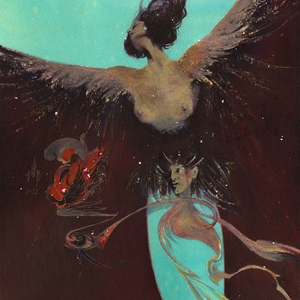 This duo of Nathaniel Ritter and Troy Schafer have had their work branded as neofolk since their emergence in the middle part of the last decade, but closer scrutiny makes this an oversimplified label. While Kinit Her may work with instrumentation and esoteric imagery of a time long past, the way it is structured and presented is a different matter entirely, and manages to make them one of the few artists working within a nebulous genre that sound like something far more complex and nuanced than a tired, renaissance faire tribute band.
This duo of Nathaniel Ritter and Troy Schafer have had their work branded as neofolk since their emergence in the middle part of the last decade, but closer scrutiny makes this an oversimplified label. While Kinit Her may work with instrumentation and esoteric imagery of a time long past, the way it is structured and presented is a different matter entirely, and manages to make them one of the few artists working within a nebulous genre that sound like something far more complex and nuanced than a tired, renaissance faire tribute band.
Originally issued as a CD last year, the Pesanta label has seen fit to present this album in a much more luxurious, gatefold double LP that is a better fit for the drama and complexity that is presented.Bookended by the two-part "Mosaic of the Hyacinths," the distinction from other artists is clear.While the acoustic guitar and bowed string trappings of folk music abound, as does the boisterous vocals that cut through the pastoral calm, everything is soon expanded by what sounds like a digitally processed horn and treated percussive throb, pushing the two pieces into a more disorienting, disjointed sound that ends up being more than a bit disturbing.
"On This Plane" is another example of where the familiar sounds and instrumentation are reassembled in an unlikely manner, with dissonant, painfully scraped strings and slow percussion paired together, with the duo’s dramatic vocals making this all the more powerful."(Song of) Our Wrongs" has the same qualities, with even more unpredictable arrangements and instrumentation added.The jagged, plucked strings and bells of the title song also stick a bit more to a more medieval sound, but with a more modern build and release of tension throughout.
While Kinit Her has their own distinct sound, there are moments that fall prey to some of the more off-putting elements of this type of music, albeit few and far between.The overly affected vocals of "As We Were" and "Sky's Not Dead" are not my favorite thing, not because they are poorly done, but it is just a style and a sound that has never resonated with me.That sense of high drama and bombast with the vocals and lyrics is spread throughout Storm of Radiance, but it mostly feels fitting elsewhere else: here it just stands out a bit too much for my liking.
With that being said, even those two songs have enough distinct compositional elements and arrangement to be enjoyable, and the remainder of the album actually benefits from that sound.For a style that is often too rooted in its own, intentionally Luddite conventions, Ritter and Schafer manage to work with those tropes but in a unique and singular framework.Rather than trite songs about runes and fairies and whatnot, their output is far more individualist and rich, transcending the boundaries of an otherwise insular genre and carving their own distinct, powerful niche of art.
samples:
 
Read More
- Administrator
- Albums and Singles
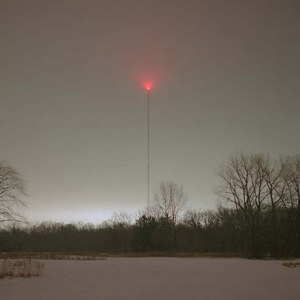 Combining solo artist Neil Jendon on synths, Mike Weis of Zelienople on drums, and Locrian guitarist André Foisy, Kwaidan might almost meet the definition of a supergroup for the post-drone/metal crowd, and it would not be an inappropriate designation. There is a certain grandiose drama throughout this LP, even if the sound is anything but pretentious or bombastic. It feels like a taut, fully developed collaboration from three masters of their respective instruments.
Combining solo artist Neil Jendon on synths, Mike Weis of Zelienople on drums, and Locrian guitarist André Foisy, Kwaidan might almost meet the definition of a supergroup for the post-drone/metal crowd, and it would not be an inappropriate designation. There is a certain grandiose drama throughout this LP, even if the sound is anything but pretentious or bombastic. It feels like a taut, fully developed collaboration from three masters of their respective instruments.
The three-part suite "Three Empty Rooms of Light and Space" does give a certain prog supergroup sensibility to the material, and again that is not entirely off-base.The first part, "Evening Bell," is initially all droning amp noise and dissonant electronics, propelled by a sharp, gunshot like percussion line that slowly is filled in with guitar and keyboards.The two instruments meld together into an electric wall of sound that lumbers onward, propelled by the slow beat before unraveling into fragments of noise.
This is contrasted by the second part, "Gateless Gate," that leads off with tense, motorik percussion driving gentle guitar feedback and noisy keyboards.Everyone’s individual contribution can be distinctly heard, but exist together nicely in a wide open sonic space, like a modernized, metallic glistening reinvention of Neu!’s "Hallo Gallo."The suite closer, "Ostension," brings it back to a slow, throbbing rhythm and shimmering guitars, initially ambient but more textural and dissonant in its conclusion.
Each performer both stands alone impressively and mixes beautifully with the other two.On "Space as Support," Weis' complex percussion, Jendon's delicate synth pads, and Foisy's careful, disciplined guitar work sound perfect alongside each other, but each being distinct from the other.Too often within these more abstract type works, the instruments blur together into an indistinct morass of sound, but not once does that happen on the album.
Jendon's electronics and synth are less traditional and more obtuse on the long "The Sound of This Bell." They do stand out nicely. however, next to Foisy's more traditional sounding guitar playing.Even when everything blends into a slightly more chaotic, dissonant bit of noise, never does it sound messy or indistinguishable.
While there is a distinct heaviness and density to Kwaidan's output, I never found it to be oppressive or overly dark.Like the fog laden cover art, there is a progressive rock tinged haze that enshrouds this album without obscuring it, and the final product is far more complex and compelling than some also-ran project that gets thrown into the (unfortunately) ever expanding, generic"drone" category.
samples:
 
Read More
- Administrator
- Albums and Singles
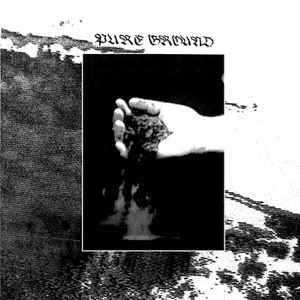 Even before Prurient's foray into actual electronic music on Bermuda Drain, there was a nascent trend in the noise scene embracing synth pop and early electro sounds in a raw, underground sort of approach. One of the leaders of this charge was Greh Holger (Hive Mind), whose Chondritic Sound label has made a slow transition from harsh noise to minimal wave in the past few years. Here, paired with Brotman and Short's Jesse Short, he presents two rough-hewn throwbacks to the early '80s new wave scene, in the best possible way.
Even before Prurient's foray into actual electronic music on Bermuda Drain, there was a nascent trend in the noise scene embracing synth pop and early electro sounds in a raw, underground sort of approach. One of the leaders of this charge was Greh Holger (Hive Mind), whose Chondritic Sound label has made a slow transition from harsh noise to minimal wave in the past few years. Here, paired with Brotman and Short's Jesse Short, he presents two rough-hewn throwbacks to the early '80s new wave scene, in the best possible way.
"Crawling Through" is the more uptempo of the two songs, largely based around a hollow TR-606 kick drum and lead synth sequences that have just the right amount of distortion and noise surrounding them.It follows the standard minimal wave blueprint, but throws just enough noise and dissonance to provide its own identity.On the flip side, the slower, more desperate "Evaporation" slowly trudges along at a snail’s pace, getting to that tenuous level of gothic synth cliché to where it is still enjoyable and endearing, and does not become overwrought or trite.
I immediately felt some traces of Geography-era Front 242, both from the archaic instrumentation (which was then state of the art, of course), and also Holger’s detached, reverberated vocals that are perfectly monochromatic for this project.The two songs may be somewhat simple in their construction, but the structure and the sound of them just grab me in a way that many projects of this ilk fail to do.With their minimal approach that yields catchy rhythms and melodies, it has been a single I have come back to many times since first hearing it.
Read More

